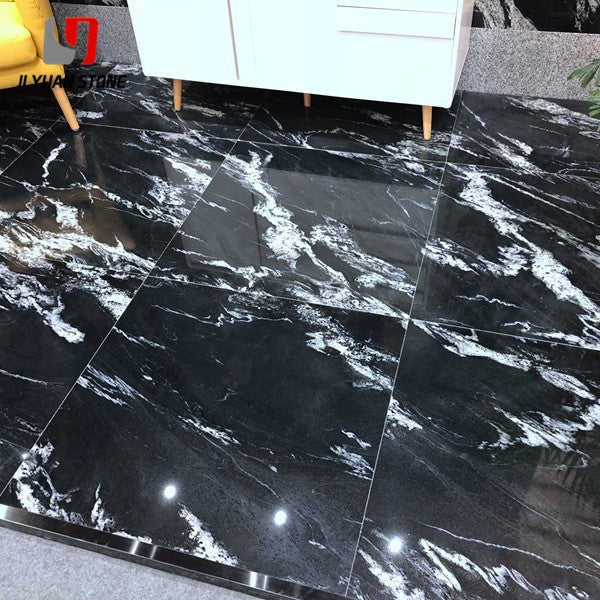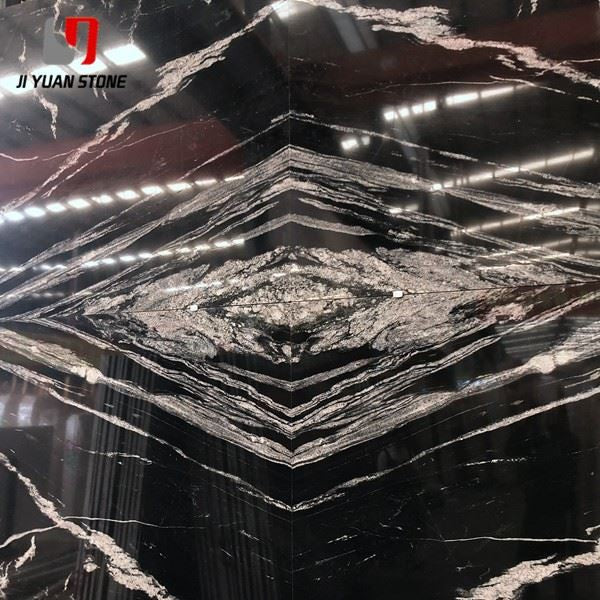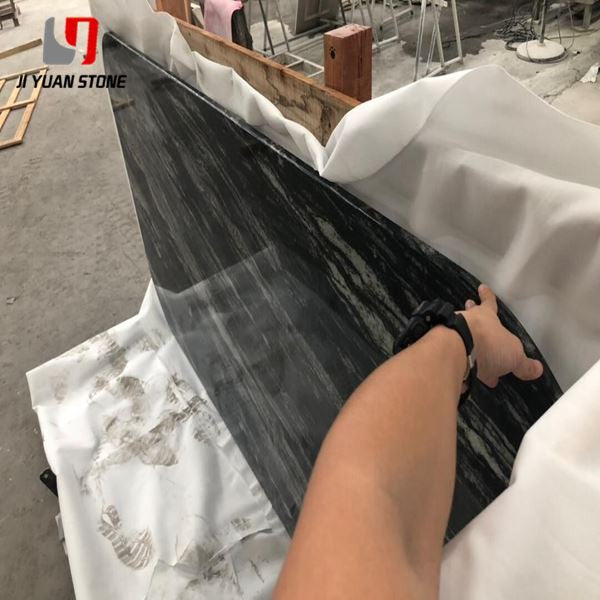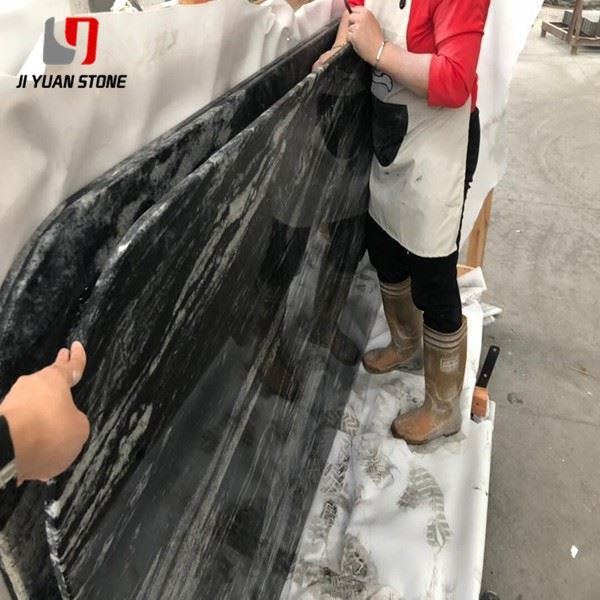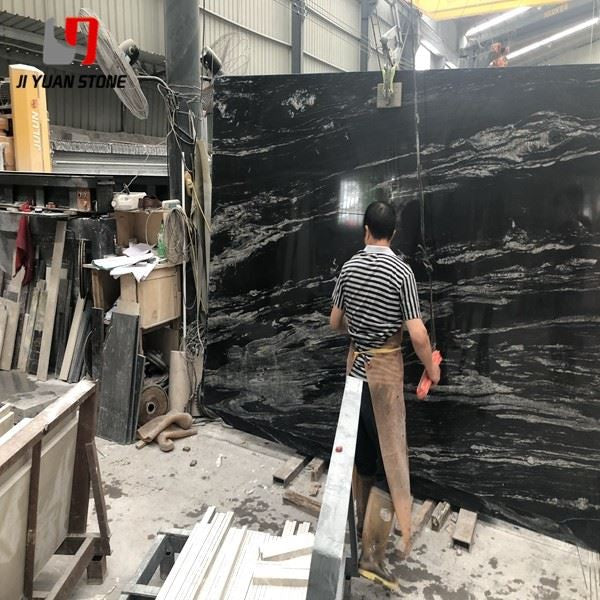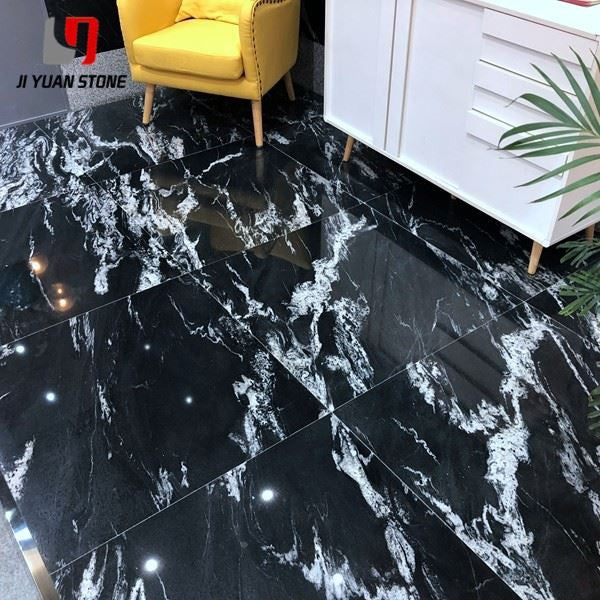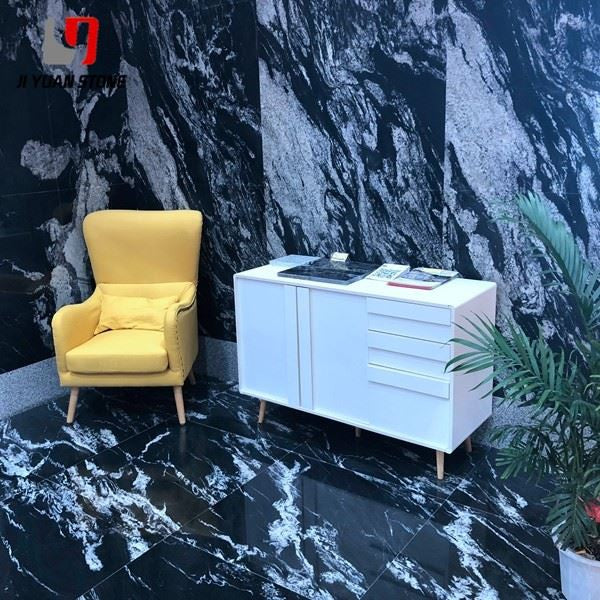Cosmo Black Granite Countertop
Cosmo Black Granite Countertop
Cosmo Black Granite Countertop – Bold Elegance, Natural Durability
Upgrade your kitchen with Cosmo Black Granite Countertop. This high-quality granite countertop boasts durability and sophistication, adding value to your home. With its sleek black finish, it will elevate the look of any kitchen. Plus, its resistance to heat and scratches makes it a practical and stylish choice.
| Feature | Details |
|---|---|
| Product |
Cosmo Black Granite Countertop |
| Material | Cosmo Black Granite |
| Surface | Polished, Honed, Leathered |
| Thickness | 2cm, 2.5cm, (2+2)cm, 3cm, etc. |
| Finished Products | Floor Tiles, Wall Cladding, Countertops, Windowsills, Special-Shaped Tiles, Small Slabs, Swimming Pool Coping, Stairs, Steps, Wall Panel Paver, Flooring, Veneers, Slabs, Coping Tiles, Bathtub etc. |
| Application | Hotel, Villa, Apartment, Office Building, Hospital, School, Mall, Sports Venues, Leisure Facilities, Supermarket, Warehouse, Workshop, Park, Farmhouse, Courtyard, etc. |
| Color | White, Black |
| Vanity Top Size | 25×19×3/4", 31×19×3/4", 37×19×3/4", 43×19×3/4", 49×19×3/4", 61×19×3/4", 25×22×3/4", 31×22×3/4", 37×22×3/4", 43×22×3/4", 49×22×3/4", 61×22×3/4", or custom sizes. |
| Kitchen Top Size |
|
Bring luxury and resilience into your kitchen with the Cosmo Black Granite Countertop. Featuring a stunning dark base with intricate natural speckling, this granite surface delivers a perfect balance of dramatic aesthetics and geological history. Ideal for modern interiors and high-use kitchens, Cosmo Black Granite is more than just a countertop—it's a masterpiece formed by nature over millions of years.
Formation and Characteristics of White and Black Granite Kitchen Counters
Granite is one of the most widely used natural stones, and varieties like Cosmo Black offer a glimpse into the diversity of granite found around the world. Characterized by its rich textures and distinctive speckled patterns, black and white granite countertops are shaped by slow geological processes deep within the Earth.
Common Characteristics of White and Black Granite:
- Typically feature natural speckling, not artificial striping
- Patterns result from millions of years of mineral crystallization
- Naturally formed under high heat and pressure, giving granite its legendary strength and durability
Geological Formation of Granite
The story of granite begins with the formation of Earth itself:
🔹 Early Earth Formation:
The Earth emerged from the condensation and collapse of the primordial solar nebula. High-energy impacts from planetesimals generated extreme heat, trapped in Earth’s interior by pressure and radioactive decay from elements such as uranium and thorium.
🔹 Basaltic Magma:
Early crusts composed of iron, magnesium, and silicon gave rise to basaltic magma, which formed the oceanic crust as it cooled.
🔹 Granite Formation:
When basalt melted again, lighter elements like silicon and aluminum rose to the surface, forming silico-alumina-rich magma. As this magma cooled slowly, it created the granite layers of the continental crust. Over countless cycles of melting and cooling, the mineral content became more refined, producing the gorgeous speckled granite we use today.
Granite vs. Basalt Comparison
| Feature | Granite (Continental Crust) | Basalt (Oceanic Crust) |
|---|---|---|
| Main Components | Silicon, Aluminum | Iron, Magnesium |
| Density | Lower | Higher |
| Cooling Process | Slow Cooling | Rapid Cooling |
| Texture | Speckled | Fine-Grained |
What Influences Granite’s Appearance?
Each Cosmo Black Granite slab is unique, with variations in pattern and depth shaped by:
- Original melt composition
- Magma cooling rate
- Crystal nucleation rate
- Pressure fluctuations
- Presence of volatile compounds
- Viscosity of surrounding fluids
These factors create the uniform yet natural speckled appearance that gives granite its striking beauty and timeless appeal.
Why Choose Cosmo Black Granite Countertops?
- ✅ Dramatic and stylish appearance for any kitchen design
- ✅ Formed naturally over millions of years
- ✅ Extremely durable and heat resistant
- ✅ Low porosity and minimal maintenance needs
- ✅ Adds value and sophistication to any home
Choose the Cosmo Black Granite Countertop to bring enduring beauty, strength, and the story of Earth’s history into your kitchen. With every slab shaped by the planet’s natural processes, no two pieces are alike—ensuring your space remains as unique as it is elegant.
Share
